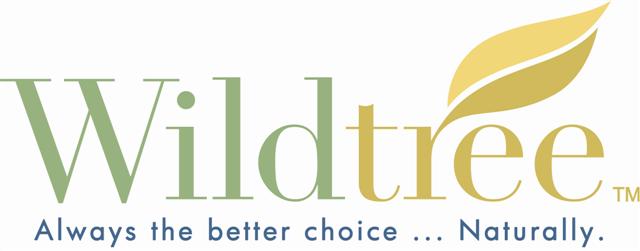The industrial revolution transformed the food supply in the 20th century from dependence on locally grown fruits, vegetables and meats cooked at home to large companies using many new ingredients from many different sources.
The food became processed and by the mid 20th century many new chemicals were added to "aid" processing, enhance flavor, preserve flavor and color, extend shelf life, prevent mold, etc. As many childhood diseases were eliminated, the medical research focus turned to diseases that emerge in old age.Cancer began to be thought of as caused by chemicals and this laid the foundation for the Delaney Clause. The Delaney Clause (1958) is still in effect. It prohibits the FDA from approving any food additive found to induce cancer in humans or animals. 1960's countercultures – organic movement. Many had strong reservations about using certain chemicals and processing methods in food production. 1970s, FDA issued new regulations defining "natural flavor and color" so that consumers could make more informed decisions about the foods they purchased. 1988, the FDA informally defined natural to mean that nothing artificial or synthetic has been added to a food that would not normally be expected to be in the food. 1991, FDA has concerns over evidence that natural was used on a variety of products to mean a variety of things. The FDA reviewed definitions by other agencies, state governments, the food industry and solicited a wide range of comments from industry. 1993, the FDA announced its decision not to define the term natural due to limited resources and other priorities but will retain its 1988 policy noted above.
Conflict and Controversy
2006, the Sugar Association petitioned FDA to define natural by regulation to exclude high fructose corn syrup (HFCS), a request that was strenuously opposed by the Corn Products Association. Sara Lee submitted a separate petition asking FDA to collaborate with USDA to establish a single definition of natural by regulation. The FDA is unlikely to grant either of these petitions because FDA does not review and approve product labeling prior to marketing.The FDA has little incentive to expend the resources that defining natural by regulation would consume. This means that there is no realistic possibility that a single definition of natural will be established in the near future. So, food manufacturers continue to make their own decisions on what is natural.
What Does Natural Mean at Wildtree?
• No artificial colors
• No artificial flavors
• No preservatives
• No high-fructose corn syrup
• No MSG
• No hydrogenated oils
• No irradiation
• No hydrolyzed protein (vegetable or dairy)
What Ingredients Are Used At Wildtree That I May Not Recognize?
Xanthan Gum: produced from the fermentation of corn sugar. It is used as a thickener, emulsifier and stabilizer in foods such as dairy products, salad dressings, etc. Guar Gum: a gummy substance obtained from the beans of a guar plant that grow in Pakistan and Northern regions of India. It is used as a thickener and stabilizer. Citric Acid: a white powder extracted from the juice of citrus and other acidic fruits. It has a strong tart taste and is used as an acidulant* as well as a flavoring agent in the processing of foods. Malic Acid: a natural acid found in sour apples and other fruits. It is used as an acidulant* as well as a flavoring agent in the processing of foods. Lactic Acid: occurs naturally in the souring of milk and can be found in foods such as cheese and yogurt. It is used as an acidulant* as well as a flavoring agent in the processing of foods. *Acidulant: an acidic substance used in food that acts as a control agent to alter food pH levels. It increases foods acidity in order to make it shelf stable. Yeast Extract: a vitamin-B-rich mixture made by combining vegetable extract and the extracted liquid of fresh yeast. It is used as a seasoning and as a base for various products.
What Ingredients Does Wildtree Not Use?
acesulfame-K (acesulfame potassium)
acetylated esters of mono- and diglycerides
ammonium chloride
artificial colors
artificial flavors
aspartame
azodicarbonamide
benzoates in food
benzoyl peroxide
BHA (butylated hydroxyanisole)
BHT (butylated hydroxytoluene)
bromated flour
brominated vegetable oil (BVO)
calcium bromate
calcium disodium EDTA
calcium peroxide
calcium propionate
calcium saccharin
calcium sorbate
calcium stearoyl-2-lactylate
caprocaprylobehenin.
certified colors
cyclamates
cysteine (l-cysteine), as an additive for bread products
DATEM (Diacetyl tartaric and fatty acid esters of mono and diglycerides)
dimethylpolysiloxane
dioctyl sodium sulfosuccinate (DSS)
disodium calcium EDTA
disodium dihydrogen EDTA
disodium guanylate
disodium inosinate
EDTA
ethyl vanillin
FD & C colors
GMO Foods
GMP (disodium guanylate)
hexa-, hepta- and octa-esters of sucrose
HFCS High Fructose Corn Syrup
hydrogenated fats
IMP (disodium inosinate)
irradiated foods
lactylated esters of mono- and diglycerides
methyl silicon
methylparaben
microparticularized whey protein derived fat substitute
monosodium glutamate (MSG)
natamyacin
nitrates/nitrites
partially hydrogenated oil
peanuts
polydextrose
potassium benzoate
potassium bisulfite
potassium bromate
potassium metabisulfite
potassium sorbate
propionates
propyl gallate
propylene glycol
polypropylene glycol
propylparaben
saccharin
silicon dioxide
sodium aluminum phosphate
sodium aluminum sulfate
sodium benzoate
sodium bisulfite
sodium diacetate
sodium glutamate
sodium nitrate/nitrite
sodium propionate
sodium stearoyl-2-lactylate
sodium sulfite
solvent extracted oils, as standalone single-ingredient oils
sorbic acid
sucralose
sucroglycerides
sucrose polyester
sulfites (sulfur dioxide)
Tree Nuts
TBHQ (tertiary butylhydroquinone)
tetrasodium EDTA
vanillin

